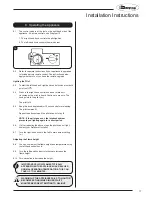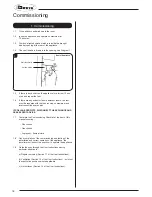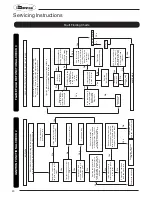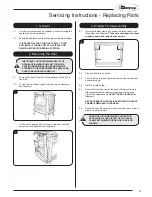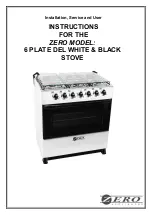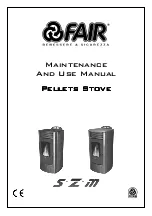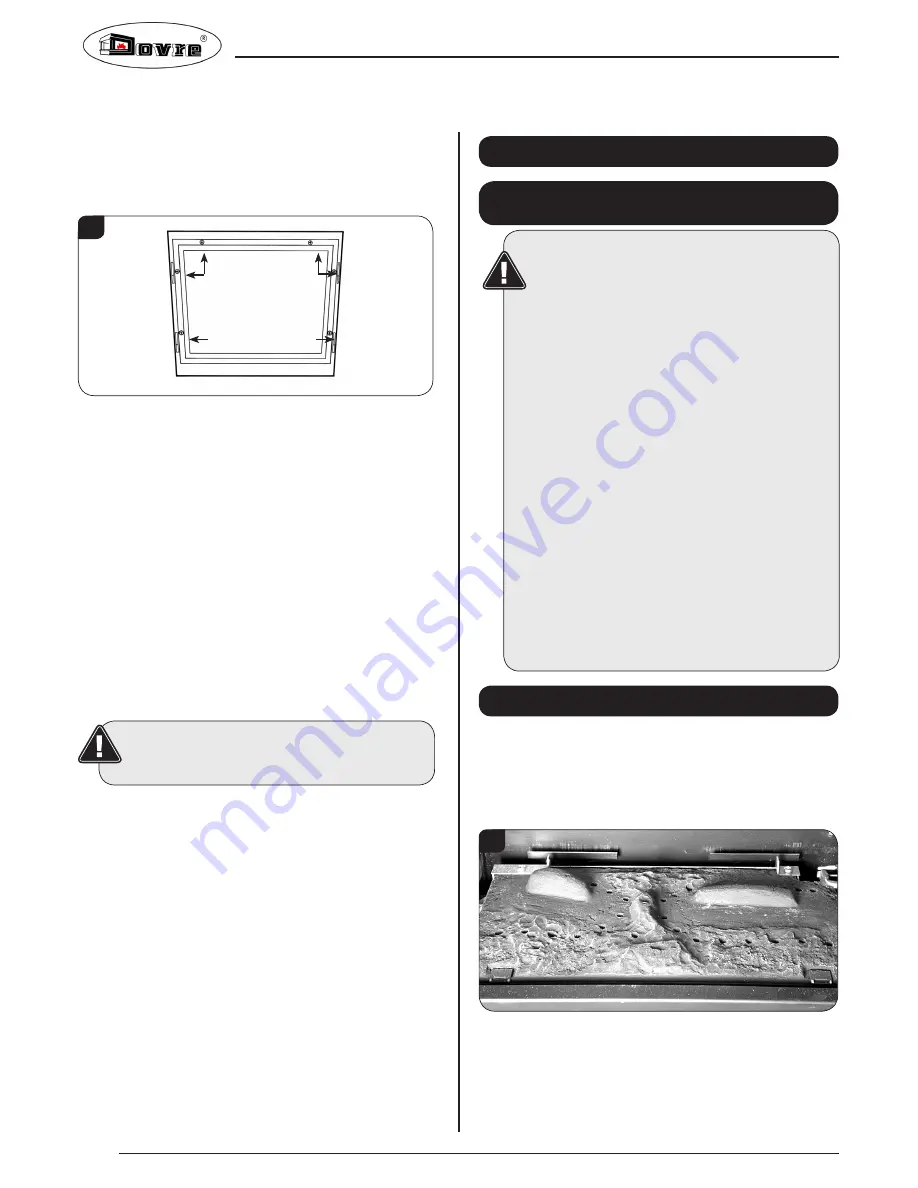
6
5.5 Remove the glass frame by undoing the fixing screws and
lifting clear, see Diagram 4. Take care to support the glass
window panel when removing the screws.
5.6 Place carefully to one side.
4
5.7 Lift out the log guard, see Diagram 11.
5.8 Carefully remove the ceramic fuel bed components and set
aside. Protect the floor coverings and follow the advice
given in Section 6.
5.9 The logs do not require cleaning. Do not use a vacuum
cleaner or brush to clean the coals, any large pieces of
debris can be removed by hand.
5.10 Ensure any debris is removed from the burner ports.
5.11 Replace the ceramics, see Section 6.
5.12 Ensure that the rope seal on the back of the glass frame is
intact and replace the screws working from the top down.
Tighten the screws evenly DO NOT OVER TIGHTEN, see
Diagram 4.
5.13 Replace ALL of the securing screws ensuring that a screw is
present in all fixing slots.
UNDER NO CIRCUMSTANCES SHOULD THE
APPLIANCE BE USED IF ANY OF THE FRAME
RETAINING SCREWS ARE LOOSE OR MISSING.
5.14 With the top still supported or removed refit front by locating
in grooves and lowering into place, see Diagram 3.
5.15 Replace top, see Diagram 2.
NEVER OPERATE THE APPLIANCE WHEN THE GLASS
FRAME IS REMOVED, OR THE GLASS IS BROKEN.
5.16 Use a damp cloth to clean the outer casing of the appliance.
User Instructions
6. Arrangement of Fuel Bed
Advice on handling and disposal
of fire ceramics
The fuel effect of the log version of this
appliance is made from Refractory Ceramic
Fibre (RCF), a material which is commonly used
for this application.
Protective clothing is not required when
handling these articles, but we recommend you
follow normal hygiene rules of not smoking,
eating or drinking in the work area and always
wash your hands before eating or drinking.
To ensure that the release of RCF fibres are kept
to a minimum, during installation and servicing
a HEPA filtered vacuum is recommended to
remove any dust accumulated in and around the
appliance before and after working on it. When
servicing the appliance it is recommended that
the replaced items are not broken up, but are
sealed within heavy duty polythene bags and
labelled as RCF waste.
RCF waste is classed as stable, non-reactive
hazardous waste and may be disposed of at a
licensed landfill site.
Excessive exposure to these materials may
cause temporary irritation to eyes, skin and
respiratory tract; wash hands thoroughly after
handling the material.
7. Log Layout
LOGS MUST BE POSITIONED ACCORDING TO THE
FOLLOWING INSTRUCTIONS TO GIVE THE CORRECT
FLAME EFFECT
7.1 Ensure the burner tray is clean and free from any debris,
see Diagram 5.
5
The three logs that make up the fuel bed are visually distinct
and fit into specific parts on the burner tray.
Содержание 280
Страница 28: ...E O E ...

















